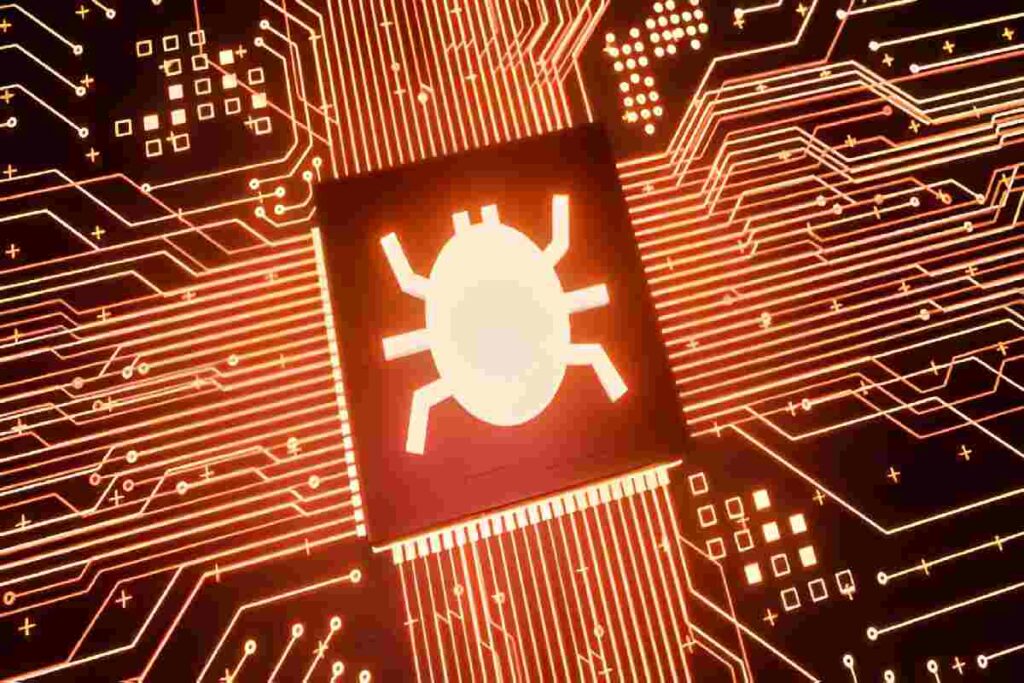Introduction
So, you’ve stumbled across 35-ds3chipdus3 on your system and are now wondering if it’s Malware. I get it—random file names like this immediately raise red flags, especially when they look like someone just mashed their keyboard.
Let me walk you through everything I know about doing a proper 35-ds3chipdus3 malware check and what you should actually be worried about.
What Exactly Is 35-ds3chipdus3?
Here’s the thing—35-ds3chipdus3 isn’t a file name I’ve seen in any legitimate software documentation. And that’s the first warning sign.
When you see cryptic file names with random numbers and letters, it usually means one of three things:
It’s Malware trying to hide – Hackers deliberately use confusing names so you won’t immediately recognize the file as suspicious.
It’s a temporary system file – Sometimes, legitimate programs create temporary files with unusual names, but they’re usually located in specific system folders.
It’s leftover junk – Old installations or failed updates sometimes leave behind files with strange naming patterns.
The name pattern itself—numbers, dashes, and random letter combinations—is exactly the kind of thing malware developers use to blend in with legitimate system processes.
Signs That 35-ds3chipdus3 Might Be Malware
Let me share what I look for when I’m trying to figure out if something’s sketchy:
Location Matters Big Time
Where did you find this file? That’s honestly the biggest clue.
If 35-ds3chipdus3 is sitting in:
- Your Downloads folder – Probably came from a sketchy website or email attachment
- AppData or Roaming folders – Could be Malware that’s trying to run on startup
- System32 or Windows folders – Major red flag unless you can verify it’s legitimate
- Random folders on your desktop – Almost definitely Malware
Legitimate system files live in predictable places. Random files in weird locations scream trouble.
Suspicious Behavior Patterns
I’ve dealt with enough infected systems to know the warning signs:
Your computer is running slower than usual – Malware consumes system resources by running its malicious processes in the background.
Strange network activity – If your internet connection seems active when you’re not using it, something might be phoning home to a command server.
Antivirus keeps getting disabled – Some malware specifically targets your security software to avoid detection.
Pop-ups and redirects – Browser hijackers often come packaged with other malware variants.
New programs you didn’t install – Malware rarely travels alone. If you’re seeing unfamiliar software, dig deeper.
How to Run a Proper 35-ds3chipdus3 Malware Check
Alright, let’s get into the practical stuff. Here’s exactly how I’d handle this situation:
Step 1: Don’t Panic (But Don’t Ignore It Either)
First, don’t just delete the file without checking it properly. Sometimes deleting random files can actually break legitimate software or make Malware harder to remove completely.
Take a breath and follow a systematic approach.
Step 2: Scan With Multiple Tools
Never trust just one antivirus program. I always use at least two different scanners because different tools catch different threats.
Run Windows Defender – It’s built-in and actually pretty decent these days. Do a full system scan, not just a quick one.
Use Malwarebytes – This is my go-to for catching stuff that traditional antivirus misses. The free version works fine for one-time scans.
Try a second-opinion scanner – Tools like Hitman Pro or ESET Online Scanner can catch things the first two missed.
Make sure all your scanners are updated before running them. Malware definitions change daily, and outdated scanners miss new threats.
Step 3: Check the File Properties
Right-click on 35-ds3chipdus3 and look at its properties:
- Creation date – Does it align with when you first noticed the problems?
- File size – Suspiciously small or large files can indicate Malware
- Digital signature – Legitimate files are usually signed by their publisher
- Description – Real programs have proper descriptions, Malware often doesn’t
If there’s no publisher information or digital signature, that’s a huge red flag.
Step 4: Search the File Hash
This is where things get technical, but stay with me because it’s super useful:
Get the file hash – Use a tool like HashTab or PowerShell to generate an MD5 or SHA256 hash of the file.
Search it on VirusTotal – Upload the hash (not the file itself if you’re paranoid) to VirusTotal.com and see what multiple antivirus engines say about it.
Check malware databases – Sites like Hybrid Analysis can tell you if this file hash has been flagged before.
If dozens of antivirus engines flag it as malicious, you’ve got your answer.
What to Do If 35-ds3chipdus3 Is Actually Malware
Found out it’s legit Malware? Here’s your action plan:
Immediate Steps
Disconnect from the internet – This stops the Malware from communicating with command servers or spreading to other devices on your network.
Don’t log into anything important – If you have keylogger malware, typing passwords right now is essentially handing them to hackers.
Boot into Safe Mode – This prevents most Malware from running, making it easier to remove.
Deep Cleaning Your System
Let your antivirus do its job – Most good antivirus tools can automatically quarantine and remove detected threats.
Manually delete remnants – Sometimes you need to dig into the registry or startup folders to remove all traces.
Check browser extensions – Malware often installs malicious browser add-ons. Remove anything you don’t recognize.
Reset browser settings – This removes hijacked homepages and search engines.
The Nuclear Option
If Malware keeps coming back or you can’t remove it completely, sometimes you just need to reinstall your operating system.
I know it’s a pain, but a fresh Windows install guarantees you’re starting clean. Make sure you back up important files first (and scan those backups for Malware, too).
Preventing Future Malware Infections
Let’s be real—prevention beats cure every single time.
Smart Browsing Habits
Don’t click sketchy links – I know everyone says this, but seriously, if an email or message seems off, it probably is.
Download from official sources only – Avoid third-party download sites that bundle crapware with legitimate software.
Read installation screens – Many people accidentally install Malware by clicking “Next” without reading what they’re agreeing to.
Keep software updated – Security patches exist for a reason. Enable automatic updates for your OS and major programs.
Essential Security Tools
Use a good antivirus – Windows Defender is sufficient for basic protection, but consider upgrading if you frequently download files or visit untrustworthy websites.
Enable a firewall – Most people never touch their firewall settings, but a properly configured firewall blocks numerous malware communications.
Consider an ad blocker – Many malware infections start with malicious ads. Blocking ads reduces your attack surface.
Use a password manager – This protects you even if you get keylogger malware, since you’re not typing passwords.
Common Mistakes People Make During Malware Checks
I’ve seen people sabotage their own malware removal efforts. Don’t make these mistakes:
Running too many antivirus programs at once – Multiple real-time protection tools conflict with each other. Use one main antivirus and supplement with on-demand scanners.
Ignoring false positives – Sometimes, legitimate files are incorrectly flagged—research before deleting anything flagged by only one scanner.
Not checking all user accounts – Malware can hide in different user profiles. Check every account on your computer.
Forgetting about mobile devices – If you sync files between devices, Malware can spread. Check your phone and tablets too.
Skipping the follow-up scan – Always run another full scan after removal to make sure everything’s gone.
When to Get Professional Help
Sometimes DIY malware removal isn’t enough. Consider getting professional help if:
- Malware keeps reappearing after multiple removal attempts
- System corruption makes your computer unstable or unbootable
- Sensitive data might be compromised, like financial or business information
- You’re not comfortable with the technical steps required for removal
- Ransomware is involved—this requires specialized recovery approaches
Professional malware removal services have tools and experience that go beyond what most people can handle at home.
My Final Thoughts on the 35-ds3chipdus3 Malware Check
Look, finding suspicious files on your computer is stressful. But with the right approach, you can figure out what’s going on and clean up your system properly.
The key is being thorough. Don’t just run a quick scan and call it done. Check multiple locations, use different tools, and actually investigate what you’re dealing with.
And honestly? If 35-ds3chipdus3 turns out to be Malware, you’re not alone. This stuff happens to everyone eventually. The important thing is catching it early and removing it completely before it causes serious damage.
Stay vigilant, keep your software updated, and don’t click on sketchy stuff. Your future self will thank you.





